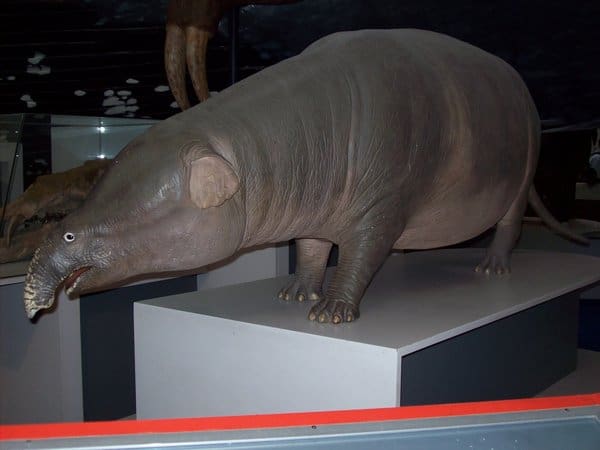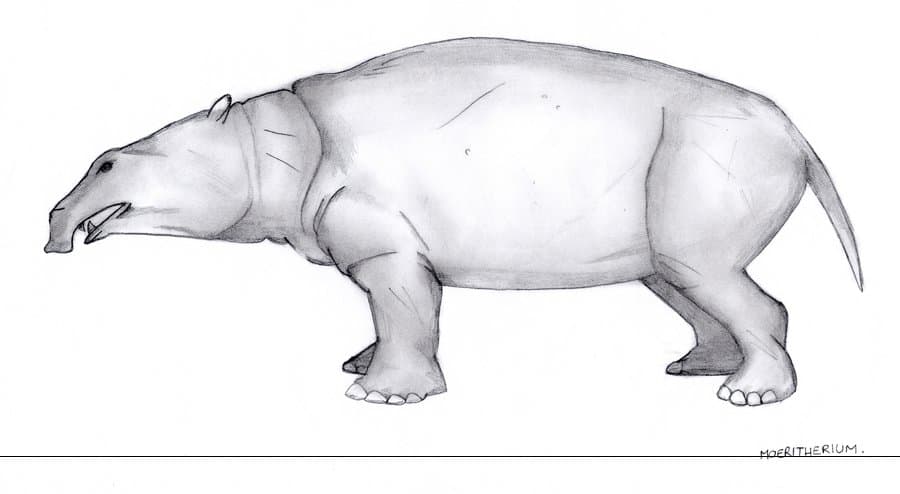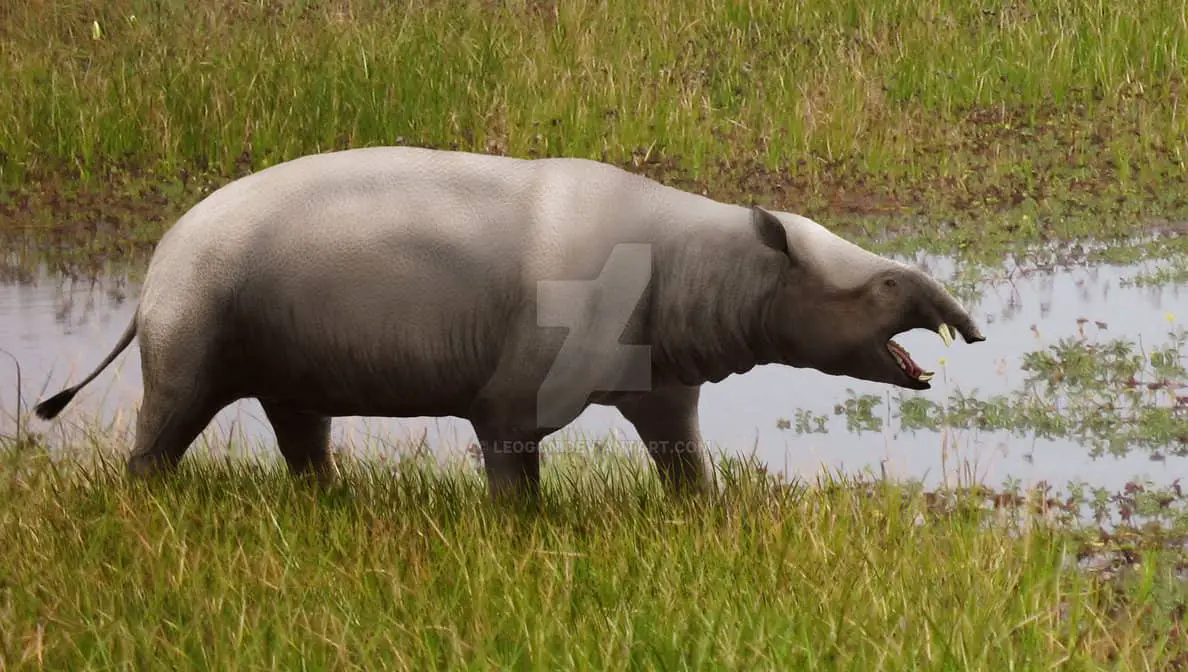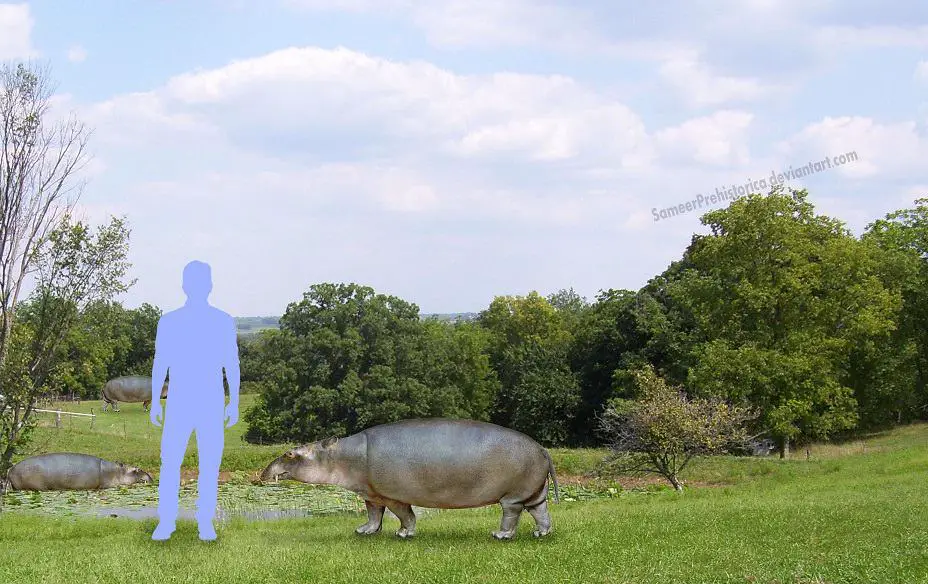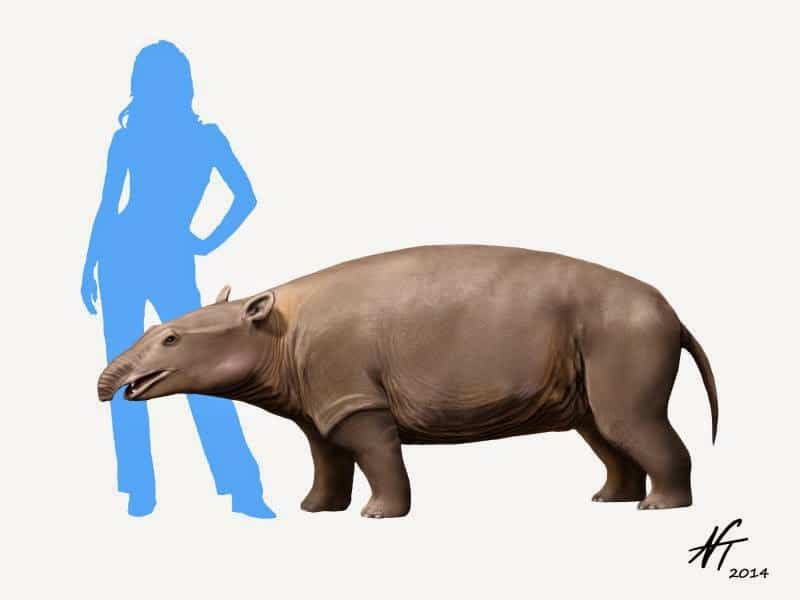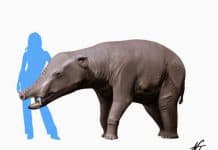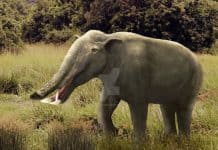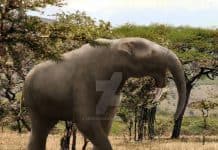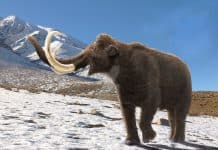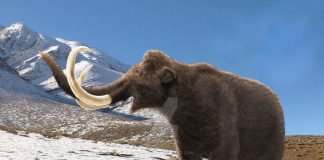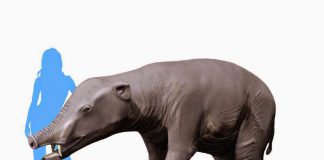Quick Moeritherium Facts
- Lived from the Late Eocene Period
- Lived in what is now North Africa
- Was about as long as a horse
- Weighed as much as a wild boar
- Only a distant cousin to elephants
- Was an herbivore
About Moeritherium
Moeritherium is a prehistoric distant relative of modern elephants which lived approximately 37 to 35 million years ago during the Late Eocene Period. It was first discovered at the turn of the 20th century near Lake Moeris in Egypt and was named by Charles Williams Andrews in 1901. The name of this animal means “Lake Moeris beast.”
Judging just from Moeritherium pictures, it can be easy to see why some people don’t realize that this mammal was in any way related to modern elephants. After all, they look nothing like them. They actually look closer to hippos than elephants. However, they are distant cousins of modern-day elephants. Sure, they aren’t direct-line ancestors – they are a side-branch that went extinct – they did have many of the traits that nature used in the evolution of pachyderms. However, they also had a few features that would become dead-ends in elephant lines. Features such as short and stubby legs.
Moeritherium was approximately 8 feet long and weighed around 200 pounds. That means that it was about as long as a horse but only weighed about as much as a wild boar. It had a long and flexible upper lip and snout that was a precursor to pachyderm’s long trunks. It also had long teeth that were a predecessor to the tusks of modern elephants.
One of the most interesting facts about Moeritherium is that while it technically belonged in the pachyderm camp, it had many traits that seemed very hippo-like. Scientists believe that it spent most of its days wallowing in lakes – much like modern hippos do today – and eat soft vegetation. All things you would expect to see hippos doing and not elephants.
